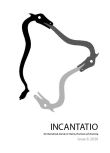Udmurt Healing Rituals. Semantic Models Of The Actional Code
Keywords:
Udmurt folk medicine, healing rite, actional code, semantic model, semantic motif, incantationAbstract
The purpose of this paper is to analyse the actional code of the Udmurt healing rite, considered as a cultural text. The scientific novelty of the work lies in the fact that the ritual actions of the healing rite are classified into groups according to the particular method of achieving the goal involved, something which takes into account the semantics of its actional component. The proposed classification is based on the system developed by E. E. Levkiyevskaya in her study of Slavic protective amulets. As a result of the analysis, the author has identified the main semantic models manifested in the elementary semantic units and motifs. The semantic models under consideration are divided into three groups: the first group combines ritual actions aiming at establishing contact, the second one contains actions intended to have impact on the source of the disease; and the third encompasses actions aimed at giving a patient an invulnerability to the disease. The analysis of folklore and ethnographic material reveals that motifs of the semantic models belonging to the second group were the most widespread ones, something which is accounted for by the fact that the concept of the fight between two opposing forces underlies most Udmurt healing rituals that involve performing an incantation against the disease.


